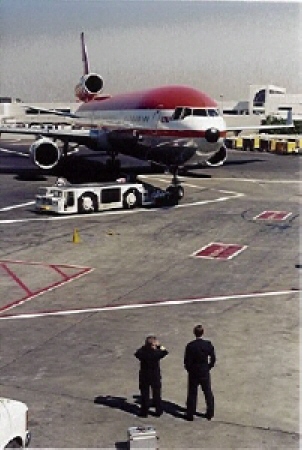
Text and photos © 2000, John or Ondine Kuraoka
First off, apologies for the egregiously poor scans. These were the very first photos I had ever tried scanning, and it shows. One of these days, I'll go back and correct them all. For much better photos, and the complete story of a six-week house-swap in Germany in September 2004, mit zwei Kind, click here.
Day 1: Los Angeles-Heidelberg.
HEIDELBERG, GERMANY – My wife and I sat on the edge of the hotel bed, the first bed we had seen in 30 hours, and stared at my feet with growing alarm. They bloomed with firm white blisters; tightly filled, itchy pillows between my toes and on the tops of my feet. Ondine, awestruck, asked "has this ever happened before?" I thought muzzily, sleepily. No, I was pretty certain I would remember such an explosion of growth on my body. We called the front desk, and asked for a referral to a local doctor. Fortunately, Ondine speaks enough German to make herself understood. I laced up my shoes, giving each foot a few whacks to relieve, momentarily, the terrible itching, and we headed downstairs. It was 10:30 at night, and we hobbled off arm in arm to seek medical help in a strange country. And that was how we spent our first night in Germany.

We might’ve known we were in for an adventure right from the start. At Los Angeles International Airport, a small mystery unfolded before us at the terminal. The captain snapped a picture of our plane – was that a good sign? He sent the co-pilot to check the plane, and the co-pilot didn’t like the left rear tire. The co-pilot motioned over the captain. They crouched, examining, prodding, peering. The captain didn’t like the left rear tire either. There was much earnest discussion, with waving arms. Calls were made. One by one, people pulled up in pick-up trucks, station wagons, and stumpy airport tractors. One by one, they looked at the tire, motioned, made more calls. And, one by one, they left. The tire remained. Immediately before boarding, the captain strode back to the tire and looked at it, looked at it hard. Then, he ambled to the gangway and climbed into the plane without looking back. We have no idea what that was all about.
In the midst of this, someone was calling my name over the loudspeaker. I thought it was my name. I have one of those easily mangled names. "Jnn Krrwkkwkk please return to the check-in counter." Curious, Ondine went to investigate. Sure enough, it was for me. They had mistakenly torn off both my departure and return tickets. That might’ve gotten interesting on the way back. I tucked the loose ticket into my waist pouch, and went back to watching the plane getting ready.
The waiting area was crowded with Germans returning home after their vacations in Southern California. We scheduled our trip to Germany for mid-October, to take advantage of off-peak rates and post-Oktoberfest quiet. We wanted to visit Heidelberg, where Ondine went to school for a year. There, we would connect with Ondine’s college roommate, Desiree. Other than that, our plans were wide open for eight or nine days. We thought about working our way East, to Vienna or Czechoslovakia or Poland. We contemplated going West, toward Strasbourg in France. And, we considered following the route of the Romantische Strasse – the famous "Romantic Road."
One thing we did plan, was what we took. We traveled light. Those books on packing light don’t even come close to what we did. We each carried an 11-pound daypack, and that’s it. My daypack held 1 polypro t-shirt, 1 light thermal top, 1 heavy fleece top, 1 light thermal bottoms, 1 heavy fleece bottoms, two pairs hiking socks, 2 pairs silk boxers, Gore-Tex parka, Gore-Tex pants, fleece neck gaiter, expandable waistpack, toothbrush, prescriptions, and a stuffed good luck travel frog (one of a pair given to us by my mother). I wore socks, boxers, polypro t-shirt, Supplex travel shirt, Supplex pants with zip-off legs, and waterproofed running shoes. During our trip, we wore (and washed) everything we had, but never had to wear everything at once -- so we could have weathered colder, wetter conditions. The quick-drying fabrics proved their worth every day in the cool, drizzly weather. Camera equipment included a Nikon FA, 24mm f/2 lens, 50mm f/1.4 lens, polarizer, A2 (81B) filter, Olympus Stylus Epic, and Olympus Stylus Zoom 105. We took 21 rolls of Fuji Superia 400-speed color print film, and two rolls of Kodak T-Max 400-speed black and white print film.
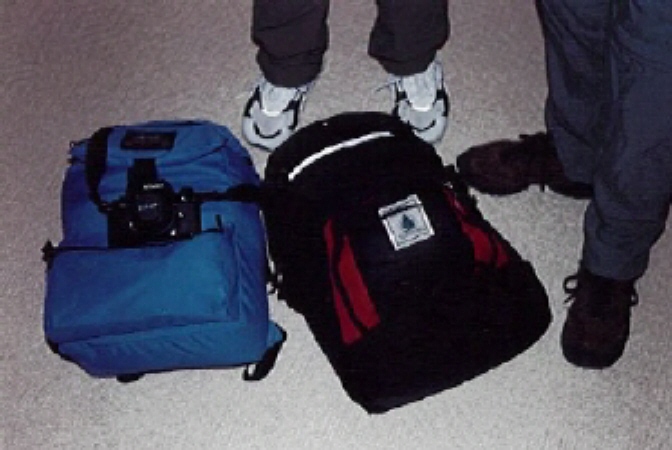
Our flight was on LTU, one of Germany’s major charter carriers (check them out at www.ltu.com). Every seat was filled. Despite the crowding and the concern over the left rear tire, it was a smooth flight. The two meals were superb, and we had three in-flight movies: The Odd Couple II, The Truman Show and a truly bad B-flick about a group of teenagers in the wilderness and a mysterious white wolf the name of which mercifully escapes me. Between movies, the monitors showed our flight’s progress across the Arctic Circle.
After an 11-hour flight, we landed in the rain in Dusseldorf, and boarded a shuttle bus to Frankfurt Airport. The Autobahn was jammed with wet weather traffic. The 90-minute trip took three hours. After being squished into an airline seat for the better part of a day, the near-empty bus seemed positively luxurious, and Ondine and I each took a row of seats to stretch out. Dangling from the rear view mirror was an odd, giraffe-like creature made of rubber. The driver’s eyes in the mirror did not look like the eyes of a man who would own a rubber giraffe. The tour guide stayed in her seat, mechanically reaching for a microphone to make occasional announcements.
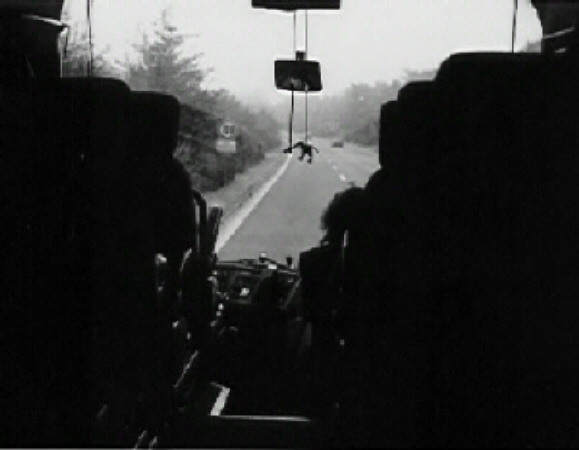
At Frankfurt Airport, we followed the arrows downstairs to the train station, and here we encountered our next adventure. Our tickets to Heidelberg required a few train transfers. We followed our computer-printed itinerary scrupulously, each time making sure we waited at the right-numbered track, and boarded the right-numbered train. After nearly two hours, I asked Ondine if the passing scenery was taking her back to her college days. She said "not really – this doesn’t look familiar at all." The train stopped and everyone got off; we had arrived. In Hanau. The end of the line.
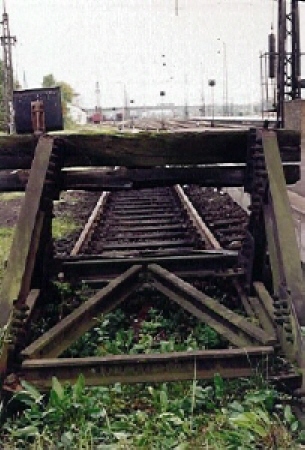
Hanau is about 20 minutes East of Frankfurt, where we started. We trudged downstairs to the station office where Ondine sorted things out with the person behind the counter. Then, with an hour to wait for the train that would put us back on course, we ate a sausage at an imbiss, a roadside bratwurst stand, our first meal in Germany. The sausage was hot and meaty; the bread roll crusty and chewy – delicious!
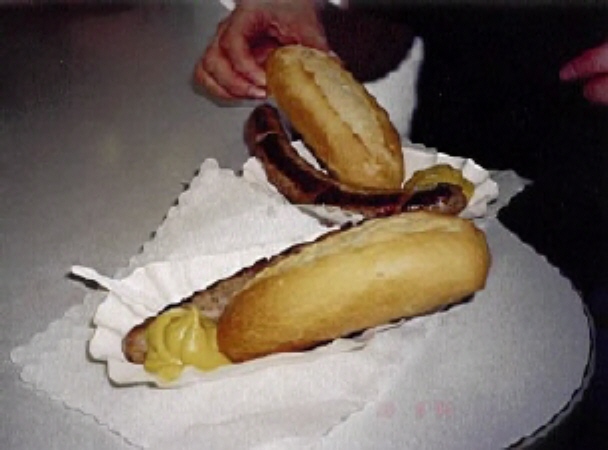
At the appointed time, we went to the designated track and waited in the drizzle. And waited. Trains came, and trains went. Finally, we saw a train headed in the right general direction on a different track. We ran for it, and clambered aboard. It was the right train.
This was our experience with trains throughout our trip: track numbers conveyed by ticket agents merely hinted at where the desired train might be found. We gyrated back to Frankfurt for Round 2. After the final train transfer, Ondine fell fast asleep. When the conductor came for our tickets, I tried to wake her. No response. The conductor smiled and waved off my shaking her harder. Shortly before the train pulled into Heidelberg, a woman seated across from us leaned over, touched Ondine’s knee, and said "this is your stop." We stepped off the train in Heidelberg as the sun set, and immediately checked into our pre-reserved room at the Hotel Ibis, right next to the train station. We had made reservations in advance for only two nights – arrival and departure.
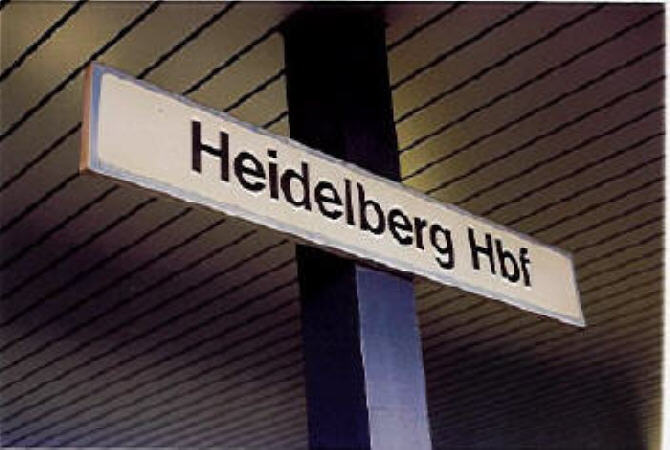
After stashing our packs in our room, we went out into the night for a walk. My feet had started itching on the plane, and the pressure of walking felt good. The sidewalk was wet and the asphalt glistened, but the rain had stopped and we could see stars. We walked to the Hauptstrasse, a broad pedestrian mall, and peered at darkened shops, some with peculiar-sounding names.
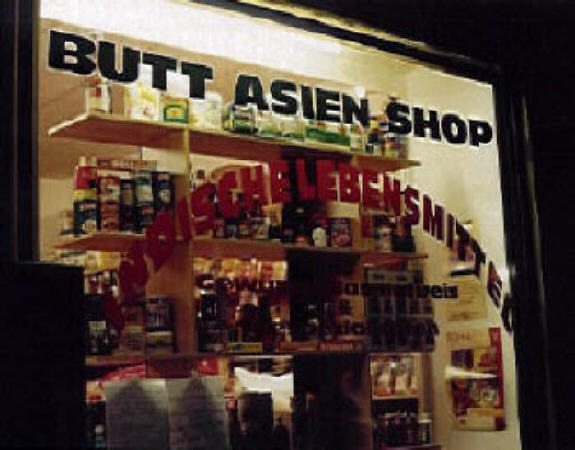
As we strolled through the old part of town near the university, Ondine remembered having a herring sandwich at one little shop, a coffee at another. We walked for an hour or longer, tasting German air, and then strolled back to our hotel room to get ready for bed. I removed my socks, discovered my blistered feet, and our next adventure began.
The medical clinic was tucked away on a side street. Fueled by an old-time Boy Scout’s knowledge of maps and itchy desperation, I directed us straight to the front door, a rare accomplishment for someone who still makes wrong turns in his own neighborhood. There, Ondine struggled to describe to the receptionist, in German, what was happening to my feet, a task which would have been hard in our native English. I stood by helplessly, shifting my weight to scratch the tops of my feet within my shoes. A friendly man nearby offered to translate, and somehow enough information was secured for our check-in.
The waiting room felt like an employee lunchroom. Chairs of orange plastic and tubular metal surrounded round woodgrained Formica tables heaped with oversized magazines. The potted plants stood erect and still, while our fellow sufferers drooped in their chairs. Ondine rested her head on the table, and I idly flipped through the magazines. They seemed to be compilations from other magazines: fashion, celebrities, automobiles, politics, music.
About five magazines later, a young-ish man with dark, curly hair strode in, dressed in a sweat shirt and jeans, carrying what looked like a large fishing tackle box. The doctor had arrived. He and his tackle box disappeared into an office, where he started working his way through his late-night patients. When our turn came, I was surprised at the size of the room. An examining table and desk fit at one end, and a narrower section of the room looked like a fairly well-equipped dispensary. Chrome machines on carts and on the walls gave the impression that anything short of major surgery was possible here. The doctor sat behind the desk. His open tackle box sat on a rolling chair, revealing its contents to be medical supplies. Ondine started to explain my symptoms in German, then asked, hopefully, "sprechen Sie English?" "Yes, I can speak English," he replied without missing a beat, and we (Ondine and I) breathed a sigh of relief.
The doctor examined my feet, eventually lancing two blisters. Nothing came out. "I do not think they are harmful," he concluded. He prescribed a cream and a powder. "Keep your feet very dry," he said. Outside, the receptionist and a male staff member we hadn’t seen before coordinated a taxi and an all-night pharmacy for us. We decided to forgo the complexities of my medical insurance, and paid cash. The bill for the visit was 60DM, or about $45.
Buying pharmaceuticals after hours had the giddy secretiveness of buying booze during prohibition. We took a taxi to a pharmacy across the Neckar River, and rang the night bell. A woman pharmacist emerged from the back, opened a small door within the front door, and removed a metal plate. We passed the prescriptions through, and the three of us conducted the entire transaction through a little hole in the door. Then, we took the taxi back to the Hotel Ibis. This entire adventure cost us a few hours at the end of a very long day, 60DM for the doctor visit, 28DM for the cream and powder, and 22DM for the taxi. For our 110DM, about the price of a modest hotel room, we got a first-rate insider’s tour of the German health system, plus our first and only ride in one of the clean, ubiquitous beige Mercedes taxis.
Finally, about 34 hours after waking up in California, we crawled into bed in Heidelberg.